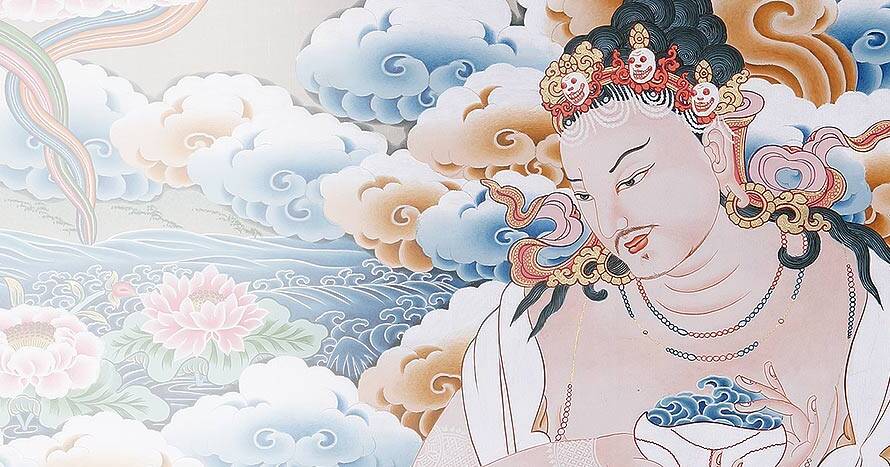The Hatha Yoga Pradipika of Svatmarama is one of the most valuable yogic texts and in the following we will analyze the important elements that this gem of spirituality offers.
Svatmarama, author of the Hatha Yoga Pradipika, lived between the twelfth and fifteenth century. Svatmarama was part of the long unbroken line of sages or rishis, descended from Brahma, by whom hatha vidya (yoga wisdom) was passed down through the ages. Hans−Ulrich Rieker’s translation and commentary of this text has been invaluable to yoga students, their practice and study.
Yoga Practice
Why should we practice yoga? Either for perfect health, strength, longevity, attainment of various spiritual powers (known in ancient spiritual tradition as siddhis), or to conquer death? There are many seemingly alluring reasons to embark on this journey, but what is common to all the ancient spiritual texts is the ultimate goal of Samadhi. Union and communion with the Highest Reality.
Hatha means to stick fast, to be devoted and to hold closely or firmly. Yoga means to unite, to associate, to yoke and to join. It also means zeal, endeavour, fixing the mind on one point, holding the body in a steady posture, contemplation and meditation. Vidya means knowledge, art and science.
Hatha yoga, or hatha vidya, is therefore the science of yoga, commonly misunderstood and misrepresented as being simply a physical practice, divorced from spiritual goals. To debunk this myth, we can look towards the ancient texts, where hatha yoga is given to us by Lord Shiva himself;
“The Goddess Parvati, the wife of Lord Siva, approached her Lord, the seed of all knowledge, for guidance to ease the suffering of humanity. Lord Siva revealed to her the greatest of all sciences for the holistic development of man − the science of hatha yoga.”
The Asanas
Today, the Western attitude greatly emphasizes the physical aspect and appearance of human beings, and maybe also the psychological aspect to some extent. Yet, the inability to dive deeper and to understand the true meaning of each bodily yoga posture and the lack of a deeper understanding of the microcosm of our own being means that we risk missing the true value of hatha yoga.
Hans−Ulrich Rieker mitigates this error by explaining the changes which take place through the practice of hatha yoga in the practitioner’s body, mind and self. He makes the reader aware of the subjective transformation that occurs as consciousness penetrates inwards towards the Self, and as the Self diffuses outwards. He shows that hatha yoga is not just physical exercise but an integrated science leading towards spiritual evolution.
In the text, the asanas are given as the first step in hatha yoga, and even though there are known to be more than 840, 000 asanas, Hatha Yoga Pradipika describes only 16 asanas. The reason is probably that spiritual practice was a part of regular daily life, so the text required more depth and not just a simple description of bodily asanas.
The Science of Yoga
Hatha yoga pradipika in a very detailed way gives us a true understanding of the science of yoga.
Humans are caught up in emotions like lust (kama), anger (krodha), greed (lobha), infatuation (moha), pride (ynadha) and malice (matsarya). Hatha yoga helps us to overcome these obstacles and hindrances to spiritual development by using these energies in a wise way through what we teach in the Tantra courses as sublimation and transmutation.
As the author says; “Yoga is a biochemical, psycho−physiological and psycho−spiritual science which deals with the moral, mental, intellectual and spiritual aspects of man, as well as the physical and physiological aspects. We can clarify our understanding of hatha yoga by first examining five important underlying concepts: mind, knowledge, aims of life, health, and afflictions.”
Hatha Yoga Pradipika
The Hatha Yoga Pradipika is divided into four parts. The first explains yamas (restraints on behaviour), niyamas (observances), asanas (postures) and food. The second describes pranayama (control or restraint of energy), and the shatkarmas (internal cleansing practices). The third deals with mudras (seals), bandhas (locks), the nadis (channels of energy through which prana flows) and the kundalini power. The fourth expounds pratyahara (withdrawal of the senses), dharana (concentration), dhyana (meditation), and samadhi (absorption).
In all, the text contains 390 verses (floras). Out of these, about forty deal with asanas, approximately one hundred and ten with pranayama, one hundred and fifty with mudras, bandhas and Shatkarmas, and the rest with pratyahara, dharana, dhyana and samadhi.
Raja Yoga
“(1) I salute the primeval Lord, Siva, who taught to Parvati the Hatha Yoga Vidya, which is as a stairway for those who wish to attain the most excellent Raja Yoga.”
Raja yoga is considered to be the high royal path of yoga. Swami Vivekananda gave his interpretation of Patanjali’s famous Yoga Sutra in his book Raja Yoga. Raja in Sanskrit means “chief, the best of its kind” or “king”. It is clear that hatha yoga is the highest form of yoga, which in a profound and step by step way gives access to unimaginable but very accessible realities of both inner and outer universe.
The Three Fires
“{10) Hatha Yoga is a sheltering monastery for those scorched by all the (three fires) types of pain. To all those engaged in the practice of Yoga, Hatha Yoga is Like the tortoise that supports the world.”
In this verse we can sense the importance of yoga, as both the support of creation and the eradicator of its afflictions. The three fires are; the fire or pain of self-created suffering, the fire or pain of suffering through higher powers, and the fire or pain of suffering caused by other beings. When we start with the practice of hatha yoga and we get to know ourselves more, we feel these pains and fires in different forms, as physical blockages, tensions in the body or disturbances of the mind.
Nobody can eliminate this solely through physical means, therefore we need to prepare our physical-mental-spiritual soil in such a way that the seeds of various impressions which caused us distress previously, cannot sprout into suffering. Suffering is also created by unfulfilled desires, and since fulfilment of those desires, for example to be validated, to be appreciated, to be loved, to be respected, to have a certain social status, career, lover etc., does not depend only on ourselves, but also on outer circumstances and influences, we suffer. And we always have a certain desire, even if it is to be in a desireless, happy state, all of the time – this is also a desire.
Striving For Perfection
Yoga means to strive for such inner perfection that one day it will be our true nature to be happy without any reason due to total inner harmony. It is not a state of apathy and indifference, devoid of natural dynamic and active life. On the contrary it is a state of overflowing fullness springing from the peace of perfection.
Then and only then renunciation will come with a sense of deep understanding and not painful regret because all our actions will be aligned with the Ultimate Will of the Creator and in alignment with the entire creation in its splendor.
Yoga, just as a tortoise, supports our longevity. Not just to live a long life, but to live a life full of happiness and meaning. Once we start to discover and investigate our inner universe, we perceive the endless space of eternity with ourselves in the middle of it, acting in each moment with perfection.
To be continued…
This article was written by Zita.


